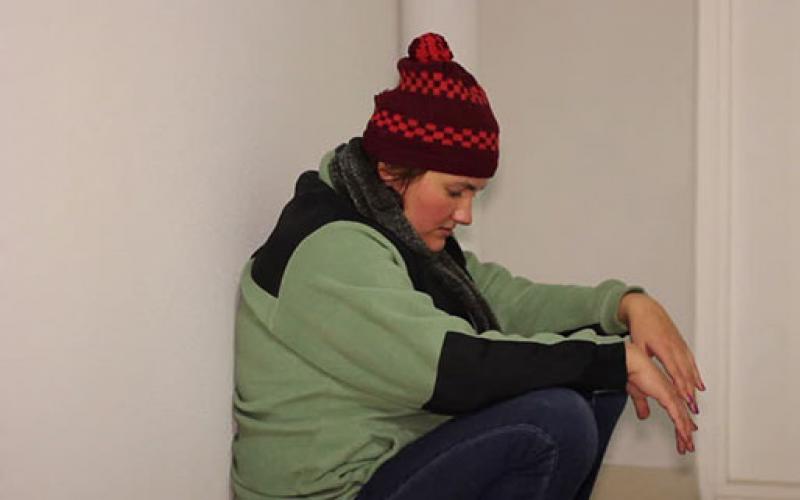The Christian Church has never been united. This is very important to remember in order not to fall into the extremes that have so often taken place in the history of this religion. It can be seen from the New Testament that the disciples of Jesus Christ, even during his lifetime, had disputes about which of them was the chief and more important in the emerging community. Two of them - John and James - even asked for thrones on the right and on left hand from Christ in the coming kingdom. After the death of the founder, the first thing that Christians began to do was to divide into various opposing groups. The book of Acts and the epistles of the apostles tell about numerous false apostles, about heretics, about those who came out of the midst of the first Christians and founded their own community. Of course, they looked at the authors of the New Testament texts and their communities in exactly the same way - as heretical and schismatic communities. Why did this happen and what was the main reason for the division of churches?
Pre-Nicene Church
We know very little about what Christianity was like before 325. We only know that this is a messianic movement within Judaism, which was initiated by a wandering preacher named Jesus. His teaching was rejected by the majority of the Jews, and Jesus himself was crucified. A few followers, however, claimed that he had risen from the dead and declared him to be the messiah promised by the prophets of the Tanakh and come to save the world. Faced with total rejection among their compatriots, they spread their sermon among the pagans, from among whom they found many adherents.

First divisions among Christians
In the process of this mission, the first split of the Christian church took place. When they went out to preach, the apostles did not have a codified written doctrine and general principles preaching. Therefore, they preached a different Christ, different theories and concepts of salvation, and imposed different ethical and religious obligations on the new converts. Some of them forced Gentile Christians to be circumcised, observe the rules of kashrut, observe the Sabbath, and comply with other provisions of the Mosaic Law. Others, on the contrary, canceled all the requirements of the Old Testament, not only in relation to the new converts of the Gentiles, but also in relation to themselves. In addition, someone considered Christ a messiah, a prophet, but at the same time a man, and someone began to endow him with divine qualities. Soon a layer of dubious legends appeared, like stories about events from childhood and so on. Plus, the salvific role of Christ was assessed differently. All this led to significant contradictions and conflicts within the early Christians and initiated a split in the Christian church.

From clearly visible such differences in views (up to mutual rejection of each other) between the apostles Peter, James and Paul. Modern scholars who study the division of churches distinguish four main branches of Christianity at this stage. In addition to the three leaders above, they add a branch of John - also a separate and independent alliance of local communities. All this is natural, given that Christ left neither a vicar nor a successor, and in general did not give any practical instructions for organizing the church of believers. The new communities were completely independent, subject only to the authority of the preacher who founded them and to the elected leaders within themselves. Theology, practice and liturgy developed independently in each community. Therefore, episodes of separation were present in the Christian environment from the very beginning and they were most often doctrinal in nature.
Post-Nicene period
After he legalized Christianity, and especially after 325, when the first one took place in the city of Nicaea, the orthodox party favored by him actually absorbed most of the other areas of early Christianity. Those that remained were declared heretics and outlawed. Christian leaders in the person of bishops received the status of government officials with all the legal consequences of their new position. As a result, the question of the administrative structure and management of the Church arose with all seriousness. If in the previous period the reasons for the division of churches were of a doctrinal and ethical nature, then in post-Nicene Christianity another important motive was added - a political one. So, an orthodox catholic who refused to obey his bishop, or the bishop himself, who did not recognize legal authority over himself, for example, a neighboring metropolitan, could also be outside the church fence.
Video: Union of Brest. History of Betrayal (2011)

Divisions of the post-Nicene period
We have already found out what was the main reason for the division of churches during this period. However, clerics often tried to color political motives in doctrinal tones. Therefore, this period gives examples of several schisms that are very complex in nature - Arian (after the name of their leader, the priest Arius), Nestorian (after the name of the founder - Patriarch Nestorius), Monophysite (from the name of the doctrine of the one nature in Christ) and many others.
Great Schism
The most significant split in the history of Christianity occurred at the turn of the first and second millennia. The hitherto unified Orthodox Catholic Church in 1054 was divided into two independent parts - the eastern, now called the Orthodox Church, and the western, known as the Roman Catholic Church.
Reasons for the split in 1054
In short, the main reason for the division of the church in 1054 is political. The fact is that the Roman Empire by that time consisted of two independent parts. The eastern part of the empire - Byzantium - was ruled by Caesar, whose throne and administrative center was located in Constantinople. The emperor was also the head of the church. The Western Empire was actually ruled by the Bishop of Rome, who concentrated both secular and spiritual power in his hands, and in addition, claims to power in the Byzantine churches. On this basis, of course, disputes and conflicts soon arose, expressed in a number of church claims against each other. Petty, in essence, nit-picking served as a pretext for a serious confrontation.
Video: Old Believer Liturgical and ritual features

In the end, in 1053, in Constantinople, by order of Patriarch Michael Cerularius, all churches of the Latin rite were closed. In response to this, Pope Leo IX sent an embassy to the capital of Byzantium, headed by Cardinal Humbert, who excommunicated Michael from the church. In response to this, the patriarch gathered a council and mutually papal legates. Right away, no special attention was paid to this, and inter-church relations continued in the usual way. But twenty years later, the initially minor conflict began to be recognized as a fundamental division of the Christian church.
Reformation
The next important split in Christianity is the emergence of Protestantism. It happened in the 30s of the 16th century, when a German monk of the Augustinian order rebelled against the authority of the Bishop of Rome and dared to criticize a number of dogmatic, disciplinary, ethical and other provisions of the Catholic Church. What was the main reason for the division of the churches at that moment is difficult to answer unambiguously. Luther was a convinced Christian, and for him the main motive was the struggle for the purity of the faith.

Of course, his movement also became a political force for the liberation of the German churches from the power of the Pope. And this, in turn, unleashed the hands of secular power, no longer bound by the requirements of Rome. For the same reasons, Protestants continued to divide among themselves. Very quickly, many European states began to appear their own ideologists of Protestantism. The Catholic Church began to burst at the seams - many countries fell out of the orbit of Rome's influence, others were on the verge of it. At the same time, the Protestants themselves did not have a single spiritual authority, not a single administrative center, and this partly resembled the organizational chaos of early Christianity. A similar situation exists among them today.
Modern schisms
What was the main reason for the division of churches in previous eras, we found out. What happens to Christianity in this regard today? First of all, it must be said that significant schisms have not arisen since the Reformation. Existing churches continue to be divided into similar small groups. Among the Orthodox, there were Old Believer, Old Style and Catacomb schisms, several groups also separated from the Catholic Church, and Protestants are relentlessly divided, starting from their very appearance. Today, the number of Protestant denominations is more than twenty thousand. However, nothing fundamentally new has emerged, except for a few semi-Christian organizations like the Mormon Church and Jehovah's Witnesses.
It is important to note that, firstly, today most churches are not associated with the political regime and are separated from the state. And secondly, there is an ecumenical movement that seeks to bring together, if not unite, the various churches. Under these conditions, the main reason for the division of churches is ideological. Today, few people seriously revise dogmatics, but on the other hand, movements for the ordination of women, weddings same-sex marriage etc. Reacting to this, each group separates itself from the others, taking its own principled position, keeping the dogmatic content of Christianity intact on the whole.
Attention, only TODAY!What was the main reason for the division of churches? The division of the Christian Church into Catholic and Orthodox. In 1054, the Christian Church split into Western (Roman Catholic) and Eastern (Greek Catholic). The Eastern Christian Church began to be called orthodox, i.e. orthodox, and those who profess Christianity according to the Greek rite - orthodox or orthodox. The disagreements between East and West that caused the "great schism" and accumulated over the centuries were of a political, cultural, ecclesiological, theological and ritual nature. a) Political differences between East and West were rooted in the political antagonism between the popes and the Byzantine emperors (basileus). In the time of the apostles, when the Christian church was just emerging, the Roman Empire was a single empire both politically and culturally, headed by one emperor. From the end of the 3rd century the empire, de jure still united, de facto divided into two parts - Eastern and Western, each of which was under the control of its own emperor (the emperor Theodosius (346-395) was the last Roman emperor who led the entire Roman Empire). Constantine deepened the process of division by establishing a new capital, Constantinople, in the east along with ancient Rome in Italy. The bishops of Rome, based on the central position of Rome as an imperial city, and on the origin of the see from the supreme apostle Peter, began to claim a special, dominant position in the entire Church. In subsequent centuries, the ambitions of the Roman pontiffs only grew, pride deeper and deeper put down its poisonous roots in church life West. Unlike the Patriarchs of Constantinople, the Popes of Rome maintained their independence from the Byzantine emperors, did not submit to them if they did not consider it necessary, and sometimes openly opposed them. In addition, in the year 800, Pope Leo III in Rome crowned the King of the Franks Charlemagne as Roman emperor, who in the eyes of his contemporaries became “equal” to the Eastern Emperor and on whose political power the Bishop of Rome was able to rely in his claims. The emperors of the Byzantine Empire, who themselves considered themselves the successors of the Roman Empire, refused to recognize the imperial title for Charles. The Byzantines viewed Charlemagne as a usurper and the papal coronation as an act of division within the empire. b) The cultural rift between East and West was largely due to the fact that Greek was spoken in the Eastern Roman Empire and Latin was spoken in the Western. In the time of the apostles, when the Roman Empire was unified, Greek and Latin were understood almost everywhere, and many could speak both languages. By 450, however, very few in Western Europe could read Greek, and after 600, few in Byzantium spoke Latin, the language of the Romans, although the empire continued to be called the Roman Empire. If the Greeks wanted to read the books of Latin authors, and the Latins the writings of the Greeks, they could only do so in translation. And this meant that the Greek East and the Latin West drew information from different sources and read different books, as a result, more and more moving away from each other. In the East they read Plato and Aristotle, in the West they read Cicero and Seneca. The main theological authorities of the Eastern Church were the fathers of the era of the Ecumenical Councils, such as Gregory the Theologian, Basil the Great, John Chrysostom, Cyril of Alexandria. In the West, the most widely read Christian author was Blessed Augustine (who was hardly known in the East) - his theological system was much easier to understand and easier to understand for the barbarians converted to Christianity than the refined arguments of the Greek Fathers. c) Ecclesiological differences. Political and cultural disagreements could not but affect the life of the Church and only contributed to church discord between Rome and Constantinople. During the entire era of the Ecumenical Councils in the West, the doctrine of papal primacy (that is, the bishop of Rome as the head of the Ecumenical Church) was gradually formed. At the same time, the primacy of the Bishop of Constantinople increased in the East, and from the end of the 6th century he assumed the title of "Ecumenical Patriarch". However, in the East, the Patriarch of Constantinople was never perceived as the head of the Universal Church: he was only second in rank after the Bishop of Rome and first in honor among the Eastern patriarchs. In the West, the Pope began to be perceived precisely as the head of the Universal Church, to whom the Church throughout the world should obey. In the East there were 4 sees (i.e. 4 Local Churches: Constantinople, Alexandria, Antioch and Jerusalem) and, accordingly, 4 patriarchs. The East recognized the Pope as the first bishop of the Church - but the first among equals. In the West, there was only one throne claiming to be of apostolic origin - namely, the See of Rome. As a result, Rome came to be seen as the only apostolic see. Although the West adopted the decisions of the Ecumenical Councils, it did not itself play an active role in them; in the Church, the West saw not so much a collegium as a monarchy - the monarchy of the Pope. The Greeks recognized the primacy of honor for the Pope, but not universal superiority, as the Pope himself believed. The primacy "by honor" in modern language can mean "the most respected", but it does not cancel the Council structure of the church (that is, the adoption of all decisions collectively through the convening of Councils of all churches, especially the apostolic ones). The Pope considered infallibility to be his prerogative, while the Greeks were convinced that in matters of faith the final decision rests not with the Pope, but with the council representing all the bishops of the church. d) Theological reasons. The main point of the theological dispute between the Churches of East and West was the Latin doctrine of the procession of the Holy Spirit from the Father and the Son (Filioque). This teaching, based on the trinitarian views of Blessed Augustine and other Latin Fathers, led to a change in the words of the Niceno-Tsaregrad Creed, where it was about the Holy Spirit: instead of “coming from the Father” in the West they began to say “from the Father and the Son (lat. Filioque) outgoing". The expression “he proceeds from the Father” is based on the words of Christ Himself (cf. John 15:26) and in this sense has indisputable authority, while the addition “and the Son” has no basis either in Scripture or in the Tradition of the early Christian Church: its began to be inserted into the Creed only at the Toledo Councils of the 6th-7th centuries, presumably as a protective measure against Arianism. From Spain, the Filioque came to France and Germany, where it was approved at the Frankfurt Council in 794. The court theologians of Charlemagne even began to reproach the Byzantines for reciting the Creed without the Filioque. Rome has for some time resisted making changes to the Creed. In 808, Pope Leo III wrote to Charlemagne that although the Filioque was theologically acceptable, it was undesirable to include it in the Creed. Leo placed in St. Peter's the tablets with the Creed without the Filioque. However, by the beginning of the 11th century, the reading of the Creed with the addition of “and the Son” also entered Roman practice. Orthodoxy objected (and still objects) to the Filioque for two reasons. Firstly, the Creed is the property of the entire Church, and any changes can be made to it only by the Ecumenical Council. By changing the Creed without consulting the East, the West (according to Khomyakov) is guilty of moral fratricide, of sin against the unity of the Church. Second, most Orthodox believe that the Filioque is theologically wrong. Orthodox believe that the Spirit proceeds only from the Father, and consider heresy the assertion that He also proceeds from the Son. e) Ritual differences between East and West have existed throughout the history of Christianity. The liturgical charter of the Roman Church differed from the charters of the Eastern Churches. A whole series of ritual trifles separated the Churches of the East and the West. In the middle of the 11th century, the main issue of a ritual nature, on which a controversy broke out between East and West, was the use of unleavened bread by the Latins at the Eucharist, while the Byzantines used leavened bread. Behind this seemingly insignificant difference, the Byzantines saw a serious difference in the theological view of the essence of the Body of Christ, taught to the faithful in the Eucharist: if leavened bread symbolizes that the flesh of Christ is consubstantial with our flesh, then unleavened bread is a symbol of the difference between the flesh of Christ and our flesh. In the service on unleavened bread, the Greeks saw an attempt on the core point of Eastern Christian theology - the doctrine of deification (which was little known in the West). These were all disagreements that preceded the conflict of 1054. Ultimately, the West and the East disagreed on matters of doctrine, mainly on two issues: the primacy of the papacy and the Filioque. Cause for the schism The immediate cause for the schism was the conflict between the first hierarchs of the two capitals - Rome and Constantinople. The Roman high priest was Leo IX. While still a German bishop, he for a long time refused the Roman See, and only at the persistent requests of the clergy and Emperor Henry III himself agreed to accept the papal tiara. On one of the rainy autumn days in 1048, in a coarse hair shirt - the clothes of the penitents, with bare feet and head sprinkled with ashes, he entered Rome to take the Roman throne. Such unusual behavior flattered the pride of the townspeople. With the triumphant cries of the crowd, he was immediately proclaimed pope. Leo IX was convinced of the high significance of the See of Rome for the entire Christian world. He tried with all his might to restore the previously wavering papal influence both in the West and in the East. Since that time, the active growth of both the ecclesiastical and socio-political significance of the papacy as an institution of power begins. Pope Leo sought respect for himself and his department not only through radical reforms, but also by actively acting as a defender of all the oppressed and offended. This is what made the pope seek a political alliance with Byzantium. At that time, the political enemy of Rome were the Normans, who had already captured Sicily and were now threatening Italy. Emperor Henry could not provide the pope with the necessary military support, and the pope did not want to give up the role of defender of Italy and Rome. Leo IX decided to ask for help from the Byzantine emperor and the Patriarch of Constantinople. From 1043 Michael Cerularius was Patriarch of Constantinople. He came from a noble aristocratic family and held a high position under the emperor. But after a failed palace coup, when a group of conspirators tried to elevate him to the throne, Michael was deprived of his property and forcibly tonsured a monk. The new emperor Constantine Monomakh made the persecuted one his closest adviser, and then, with the consent of the clergy and the people, Michael also took over the patriarchal chair. Having given himself over to the service of the Church, the new patriarch retained the traits of an imperious and state-minded person who did not tolerate the belittling of his authority and the authority of the See of Constantinople. In the resulting correspondence between the pope and the patriarch, Leo IX insisted on the primacy of the See of Rome. In his letter, he pointed out to Michael that the Church of Constantinople and even the entire East should obey and honor the Roman Church as a mother. With this position, the pope also justified the ritual divergence of the Roman Church with the Churches of the East. Michael was ready to come to terms with any differences, but on one issue his position remained irreconcilable: he did not want to recognize the Roman see as higher than that of Constantinople. The Roman bishop did not want to agree to such equality. In the spring of 1054, an embassy from Rome arrives in Constantinople, headed by Cardinal Humbert, a hot and arrogant man. Together with him, as legates, came the deacon-cardinal Frederick (future Pope Stephen IX) and Archbishop Peter of Amalfi. The purpose of the visit was to meet with Emperor Constantine IX Monomakh and discuss the possibility of a military alliance with Byzantium, as well as to reconcile with the Patriarch of Constantinople Michael Cerularius, without detracting from the primacy of the Roman see. However, from the very beginning, the embassy took a tone inconsistent with reconciliation. The papal ambassadors treated the patriarch without due respect, arrogantly and coldly. Seeing such an attitude towards himself, the patriarch repaid them in kind. At the convened Council, Michael singled out the last place for the papal legates. Cardinal Humbert considered this a humiliation and refused to engage in any negotiations with the patriarch. The news of the death of Pope Leo that came from Rome did not stop the papal legates. They continued to act with the same boldness, wanting to teach the disobedient patriarch a lesson. On July 15, 1054, when St. Sophia Cathedral was overflowing with people praying, the legates went to the altar and, interrupting the service, spoke out with denunciations against Patriarch Michael Cerullarius. Then they put on the throne a papal bull in Latin, which spoke of the excommunication of the patriarch and his adherents from communion and made ten accusations of heresy: one of the accusations concerned the "omission" of the Filioque in the Creed. Leaving the temple, the papal ambassadors shook the dust from their feet and exclaimed: "Let God see and judge." Everyone was so amazed by what they saw that there was deathly silence. The patriarch, speechless with astonishment, at first refused to accept the bull, but then he ordered it to be translated into Greek. When the content of the bull was announced to the people, such a strong excitement began that the legates had to hastily leave Constantinople. The people supported their patriarch. On July 20, 1054, Patriarch Michael Cerularius convened a Council of 20 bishops, at which he excommunicated the papal legates. The Acts of the Council were sent to all the Eastern Patriarchs. This is how the Great Schism happened. Formally, this was a gap between the Local Churches of Rome and Constantinople, however, the Patriarch of Constantinople was subsequently supported by other Eastern Patriarchates, as well as young Churches that were in the orbit of Byzantine influence, in particular the Russian one. The Church in the West eventually adopted the name Catholic; The Church in the East is called Orthodox because it preserves the Christian doctrine intact. Both Orthodoxy and Rome equally considered themselves right in controversial issues of dogma, and their opponent was wrong, therefore, after the schism, both Rome and the Orthodox Church claimed the title of the true church. But even after 1054 friendly relations between East and West persisted. Both parts of Christendom had not yet realized the full extent of the gap, and people on both sides hoped that misunderstandings could be settled without much difficulty. Attempts to agree on reunification were made for a century and a half. The controversy between Rome and Constantinople largely passed the attention of ordinary Christians. The Russian abbot Daniel of Chernigov, who made a pilgrimage to Jerusalem in 1106-1107, found the Greeks and Latins praying in holy places. True, he noted with satisfaction that during the descent of the Holy Fire on Easter, Greek lamps miraculously ignited, but the Latins were forced to light their lamps from the Greek ones. The final division between East and West came only with the beginning of the Crusades, which brought with them the spirit of hatred and malice, as well as after the capture and devastation of Constantinople by the Crusaders during the IV Crusade in 1204.
Question 1. What ideas about the structure of society, about exemplary behavior, about poverty and wealth, did the church affirm? Did the church itself follow these statements?
Answer. According to the teachings of the church of that time, it was fair to divide society into those who pray, those who fight, and, finally, those who work. Following the commandments of the New Testament was considered exemplary behavior. In particular, those who renounced earthly blessings were considered saints. As an example, people were given, for example, hermits who went to the desert and lived there alone for years, eating poorly and constantly praying to the Lord. But the church itself did not seek poverty. She concentrated in her hands considerable wealth, sometimes the most significant in the country.
Question 2. What was the main reason for the division of churches?
Answer. The reason was a dispute about who should be in charge in the Christian world: the Pope or the Patriarch of Constantinople. And they found many reasons, mainly they were discrepancies in rituals, accusations from Catholics that Orthodox Patriarch forces priests not to shave their beards, etc.
Question 3. Give facts that indicate that under Innocent III, the power of the pope reached its highest power.
Answer. Facts about Innocent III:
1) expanded the boundaries of the Papal States to the largest volume in its history;
2) in the confrontation with the King of England, John Landless, he won a complete victory, forced the king to accept all his conditions;
3) organized the first ever crusade in the territory Western Europe- in Languedoc (today the southern part of France);
4) not only organized the IV crusade, but also the first of the popes to organize the collection of money for the needs of the campaign;
5) organized the Lateran IV Ecumenical Council, which made many important decisions;
6) his vassals were England, Poland and some states on the Iberian Peninsula.
Question 4. What did the heretics preach?
Answer. There were many heretical teachings, they preached different things. But often there was criticism of the splendor of the rites of the church, their high cost, the wealth of the church and the power of the pope. Also, many (and not only among heretics, but also in the church itself) argued that a person who sins cannot be a priest.
Question 5. How did the Catholic Church deal with heretics?
Answer. Heretics were dealt with brutally. Those who repented were imprisoned, forced to make long and dangerous journeys to holy places. Those who did not repent were excommunicated from the church. The pope could excommunicate an entire region or country. It was an instrument of political struggle. Then usually the vassals rebelled against the lord of this area or the king of this country. And some people excommunicated for heresy fell into the hands of the secular authorities, who sentenced them to be burned at the stake.
Question 6. What are mendicant orders?
Answer. Some people gave up earthly goods in order to live according to the commandments of Christ. They united in monastic orders in order to live by the same rules and have their own organization. Members of such orders took vows (that is, took oaths) common to monks, but the rules of their life differed from ordinary monastic ones.
Question 7. Which of the monastic orders especially helped the Pope in the fight against heresies? What was it expressed in?
Answer. The Dominican Order helped the Pope. The monks of this particular order conducted investigations of the papal inquisition (besides it, there were other types of inquisition, where the investigation was conducted by other people). But at the same time they tried to protect from heresies and sermons.
Question 8. Draw a diagram of the sources of the wealth of the church.
Answer. Sources of wealth of the church:
1) tithe from all believers;
2) payment for all church rites;
3) sale of indulgences;
4) gifts from kings and feudal lords (in the form of large sums of money and land with peasants).
Answer left the guest
The first powerful split of the church into a western one with a center in Rome and an eastern one with
center in Constantinople occurred at the Council of Nicaea, assembled
Constantine in 325 AD e. (since the division of the ancient Roman
empire into two parts, with the foundation of Constantinople (Byzantium)
emperor Constantine the Great in 324-330. and moving the capital there
Roman Empire) since then the struggle between the two Churches has become
the fight for primacy between the two capitals), and the reason for the split
was the recognition of the trinity of God (Trinity) alone and the recognition
the subordination of Jesus Christ to God the Father - by others.
The reason for the Great Schism of 1054 was a dispute over lands in southern Italy that formally belonged to Byzantium. Having learned that the Greek rite was being supplanted and forgotten there, the Patriarch of Constantinople Michael Cerularius closed all the churches of the Latin rite in Constantinople. At the same time, he demanded that Rome recognize itself as an equal Ecumenical Patriarch in honor. Leo IX refused him this and soon died. Meanwhile, papal ambassadors arrived in Constantinople, led by Cardinal Humbert. The offended patriarch did not accept them, but only presented written denunciations of the Latin rites. Humbert, in turn, accused the patriarch of several heresies, and on July 16, 1054, he arbitrarily declared an anathema to the patriarch and his followers. Michael Cerularius responded with a Council Decree (reproducing all the accusations of Photius in 867) and anathema to the entire embassy. Thus, in terms of genre, it was another schism, far from immediately recognized as the final break between East and West.
The actual separation of the churches was a long process that took place over four centuries (from the 9th to the 12th centuries) and its cause was rooted in the growing difference in ecclesiological traditions.
Reasons for the split
The schism had many reasons: ritual, dogmatic, ethical differences between the Western and Eastern Churches, property disputes, the struggle between the Pope of Rome and the Patriarch of Constantinople for primacy among Christian patriarchs, different languages worship services (Latin in the Western Church and Greek in the Eastern).
The point of view of the Western (Catholic) Church.
The letter of dismissal was presented on July 16, 1054 in Constantinople in the St. Sophia Church on the holy altar during the service by the legate of the Pope, Cardinal Humbert. The letter of dismissal contained the following accusations against the Eastern Church:
* 1. The Church of Constantinople does not recognize the Holy Roman Church as the first apostolic see, to which, as the head, belongs the care of all the Churches,
* 2. Michael is wrongly called the patriarch,
* 3. Like the Simonians, they sell the gift of God,
* 4. Like the Valesians, they castrate strangers, and make them not only clerics, but also bishops.
* 5. Like the Arians, they rebaptize those baptized in the name of the Holy Trinity, especially the Latins.
* 6. Like the Donatists, they assert that all over the world, with the exception of the Greek Church, both the Church of Christ, and the true Eucharist, and baptism have perished.
* 7. Like the Nicolaitans, they allow marriages to the servants of the altar.
* 8. Like the Severians, they slander the law of Moses.
* 9. Like the Dukhobors, they cut off in the symbol of faith the procession of the Holy Spirit from the Son (filioque).
* 10. Like the Manichaeans, they consider leaven to be animated.
* 11. Like Nazirites, Jewish bodily cleansings are observed, newborn children are not baptized earlier than eight days after birth, parents are not honored with communion, and if they are pagans, they are denied baptism.
The point of view of the Eastern (Orthodox) Church
* “At the sight of such an act of the papal legates, publicly insulting the Eastern Church, the Church of Constantinople, in self-defense, for its part, also pronounced a condemnation on the Church of Rome, or, better, on the papal legates, Led by the Roman Pontiff. On July 20 of the same year, Patriarch Michael assembled a cathedral, at which the instigators of church discord received due retribution. The text of the full definition of this cathedral in Russian is still not known.







